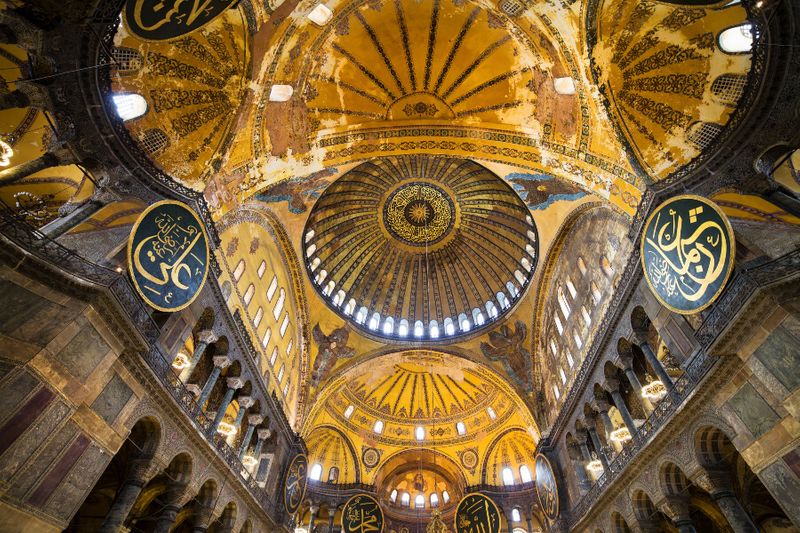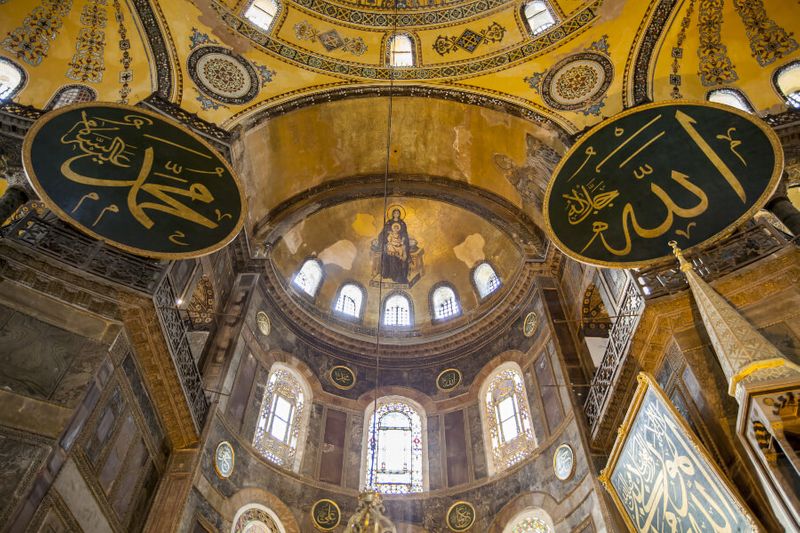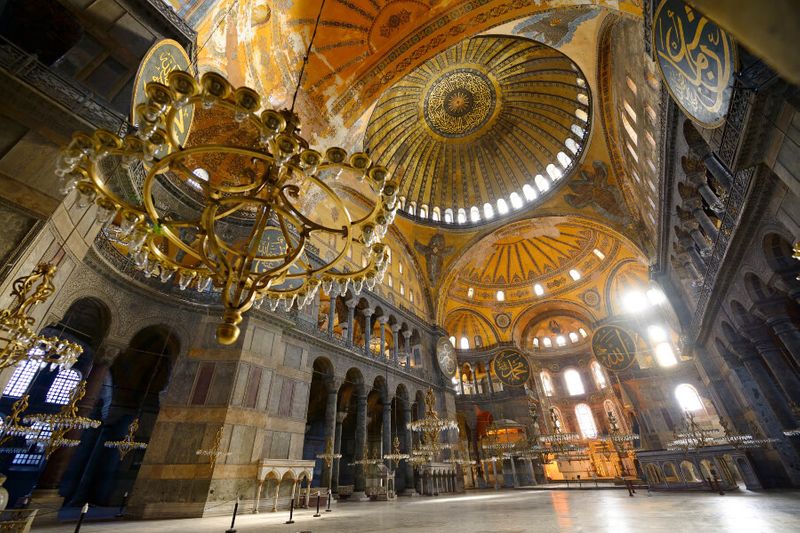Once a church, a mosque and now a museum, this treasure from the Byzantine and Ottoman empires remains one of the world’s most fascinating structures
With its giant dome, towering minarets and buttresses, the splendour of Hagia Sophia dominates Istanbul’s skyline, and decades on, remains a key attraction for any visitor to Istanbul. Commissioned by Emperor Justinian (527-565 AD), one of the early rulers of the Byzantium empire (330-1453 AD), the Hagia Sophia (its name translates as ‘Shrine of the Holy of God’), was built by Anthemius of Tralles, a geometer and architect, and architect Isidorus of Miletus in six short years. Completed in 537 AD, the monument remains Emperor Justinian’s crowning architectural achievement. No expense was spared for its construction, blocks of marble were imported from Egypt and Italy, forty thousand pounds of silver used to decorate the sanctuary, 40 arched windows were built around the arcade at the base of its 105-ft main dome, supported by curved triangle vaults that were flanked by two other semi-domes.
For almost a thousand years, the Hagia Sophia was considered the seat of the Orthodox patriarch, its splendid mosaics (most of them now lost) – added from the 9th century – depicted the history of the Byzantine empire right up to the 14th century. When Constantinople was conquered by Ottoman Sultan Mehmed II in 1453, he turned it into a mosque which he renamed Ayasofya while allowing Christian mosaics of the Virgin Mary and seraphs to remain. However, over the centuries as a mosque, the Christian altar, bells and sacrificial vessels were removed, while four 200 feet tall minarets were added at each corner during the 15th century and the interiors adorned with gold mosaics and decorations, many still visible today. In 1934, the Hagia Sofia was declared by Turkey’s first president Mustafa Kemal Atatürk as a museum and a 'monument for all civilization' making it the world's first mosque to be turned into a museum.
Attracting millions of visitors a year, stepping inside the Hagia Sophia is akin to stepping into a time capsule. Every detail tells a piece of its rich history, all around, the magnificent Byzantine mosaics – portraying everything from Emperor Leo VI on his knees before Christ, Mother Mary with baby Jesus on her lap – compel the individual to look a little closer. The circular pattern on the floor marks the spot where Byzantine emperors were crowned. The wood used to construct the Imperial Gate reserved for the emperor and his family is rumoured to be from Noah’s Ark. But perhaps, the most awe-inspiring moment arrives when you stand under the massive dome with its beautifully intact seraphim, as the light streams through its 40 arched windows, and look up at the large Arabic calligraphy work by Kazasker Mustafa Izzet Efendi. The combination of Hagia Sophia’s grandiose structure, the centuries of history and religion that have passed through its walls; there is literally no other place in the world quite like it.


